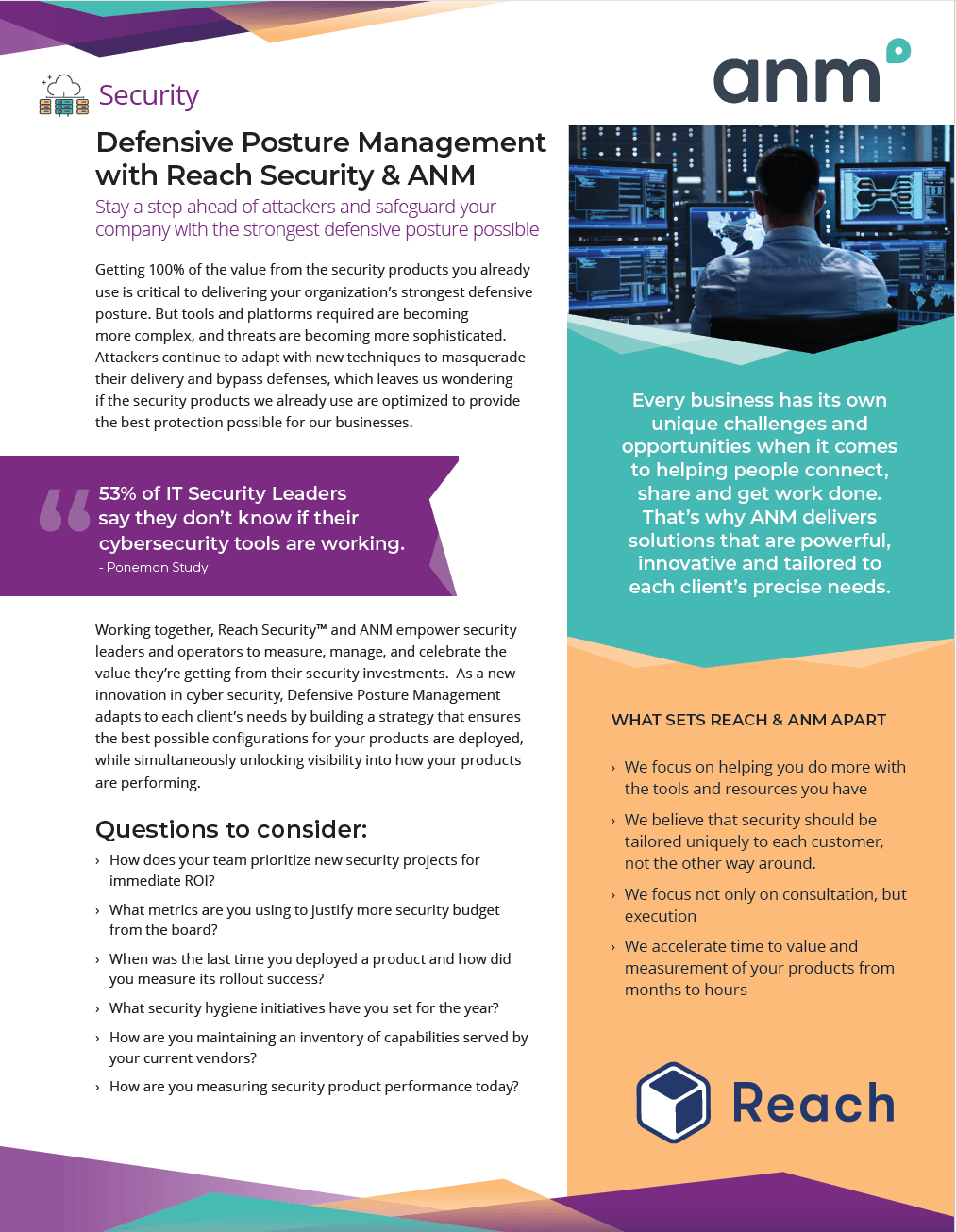Defensive Posture Management with Reach Security & ANM
Stay a step ahead of attackers and safeguard your company with the strongest defensive posture possible
Getting 100% of the value from the security products you already use is critical to delivering your organization’s strongest defensive posture. But tools and platforms required are becoming more complex, and threats are becoming more sophisticated. Attackers continue to adapt with new techniques to masquerade their delivery and bypass defenses, which leaves us wondering if the security products we already use are optimized to provide the best protection possible for our businesses.
Working together, Reach Security™ and ANM empower security leaders and operators to measure, manage, and celebrate the value they’re getting from their security investments. As a new innovation in cyber security, Defensive Posture Management adapts to each client’s needs by building a strategy that ensures the best possible configurations for your products are deployed, while simultaneously unlocking visibility into how your products are performing.
53% of IT Security Leaders say they don’t know if their cybersecurity tools are working.
How it works:
ANM and Reach Security™ use a threat-informed approach to tailoring the approach to meet the unique requirements of each client factoring in the products the team already uses. Following this approach allows you to identify, report, and remediate gaps, while allowing members of your team to focus on security outcomes instead of security products. All that’s required to start is a set of lightweight API connections. Setup is completed in a matter of minutes and results are available within an hour. ANM and Reach will:
- Understand how your organization is being attacked (e.g. who, how, and with what frequency) and what preventative capabilities are available from the products you already own.
- Measure how well your products are configured to protect the organization and help rationalize the value you are getting from them.
- Translate threats observed to custom configurations for better protection using your existing security products.
- Automate the deployment of configuration improvements back to your products to fill gaps and reduce risk.
Use Cases and Outcomes
Tool Rationalization and Usage Reporting – Gain immediate visibility into each product’s ability to stop threats relevant to your organization based on their configurations
Account Takeover and Single Sign-on (SSO) Attack Surface Reduction – Identify and action on MFA security policy gaps and reduce SSO attack surface
Detect and Mitigate Config Drift – Monitor controls to catch and remediate misconfigurations across your enterprise security stack
Automated Compliance Mapping – Automatically map deployed configurations to compliance standards like NIST CSF, 800-53, ISO-27001, CIS, and more
Data-driven Responses to Reduce Cyber Premiums – Leverage a comprehensive view of your tools to respond to security questionnaires with quantifiable data
Zero Trust/Identity as New Perimeter Protection – Automatically introduce additional control hardening from an identity-centric POV. Know the 5% of people who account for +80% of the risk
